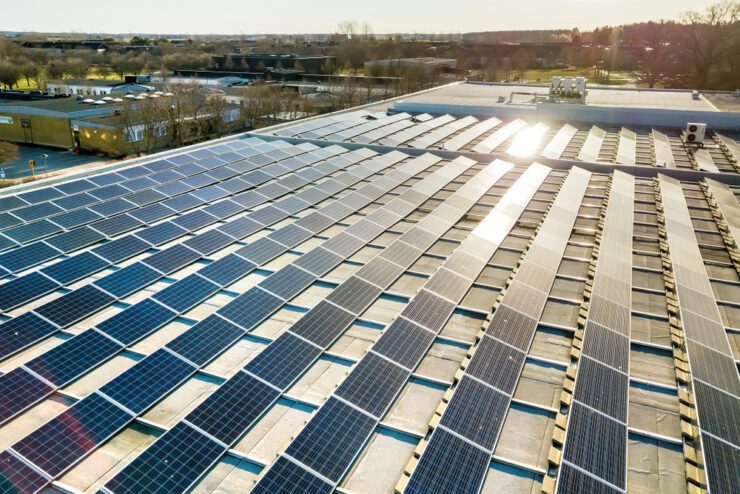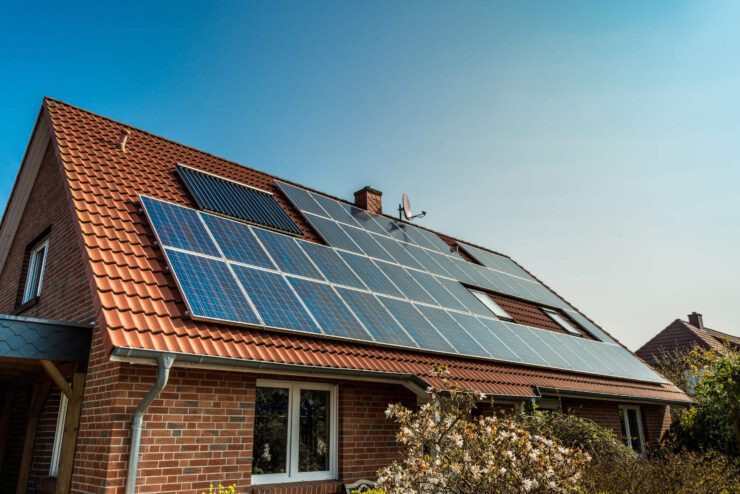One of the newest products in the photovoltaic industry, bifacial solar panels is taking the world by storm. Unlike monofacial modules, where the back surface is covered with plastic or aluminum, bifacial panels are capable of collecting energy from the sun on both sides, by using a finger grid that allows the sun to reach the backside of the panel. In practical terms, this means the bifacial panel can absorb light that is reflected off another material or the ground. The ratio of the efficiency of the rear side compared to the front, when measured under standard test conditions, is defined as bifaciality.
Bifacial solar modules can be beneficial in some ground-mounted systems as well as specific residential applications. For the majority of property owners, however, installing bifacial panels on their roofs doesn’t make too much sense. For best results, bifacial panels need to be elevated and angled slightly away from a mounting surface, which allows light to reflect into the back of the module. This is best achieved in utility-scale or commercial applications.
Bifacial Solar Module Design and Mounting
Usually, monocrystalline cells are used for the manufacture of bifacial panels, but there are polycrystalline designs as well. However, there’s a significant difference in the design and look of a bifacial solar panel compared to a traditional polycrystalline or monocrystalline silicon panel. One of the physical characteristics of bifacial panels that stands out the most is their slim profile.
The modules are housed in a transparent and thin layer, which usually consists of a dual-glass design, or includes a transparent back sheet. The framing is minimal on most bifacial panels as well for improved efficiency.
As you might have guessed, the mounting solutions are also quite different when compared to traditional monofacial panels. To absorb as much energy as possible, the amount of shaded space on both sides of the board needs to be minimal.
New mounting and racking solutions for bifacial panels are presented almost daily and include things like vertical supports, narrower support rails, and small junction boxes to bring shading on the backside to a minimum.
Still, the way a bifacial panel is mounted depends mostly on its type. Frameless modules are typically more challenging to install than framed options, primarily because traditional racking and mounting systems already exist for framed models. That said, most bifacial panel manufacturers will provide their installation hardware.
Frameless bifacial modules, on the other hand, usually feature rubber guards, which are there to protect the glass. This means it is easy to damage the glass by overtightening the bolts, so special care has to be taken while mounting.
As is the case with monofacial models, some tilt is required for best results, and the bifacial modules need to be sitting some way off the ground rather than flush against a surface. This is why ground-mounted arrays and flat commercial rooftop applications provide the best results.
Commercial Applications

As we mentioned above, utility-scale and business applications are where bifacial solar panels truly shine (no pun intended). This is especially true for panels that make use of solar trackers. According to some studies, bifacial panels are capable of yielding up to 25% more energy than traditional systems when paired with solar trackers, while they only improved efficiency by around 10% in a ground-mounted and tilted installation.
The potential for bifacial solar panels to boost production and energy output in large-scale solar installations is massive thanks to their ability to collect the power of the sun on both sides. In most commercial systems, solar panels are mounted above the ground, and in the case of bifacial solar panels, all the sunlight that is reflected off the ground beneath will also be absorbed by the back-facing cells.
How much light is collected depends on the amount reflected, which depends significantly on the surface below. Surfaces of a lighter color, such as sand or white concrete, will reflect more sunlight than something like dirt or dark asphalt.
Residential Applications

Bifacial solar panels are not ideal for residential rooftop installation, given their increased price compared to traditional monofacial panels. This relatively new technology still makes more sense in larger solar projects, such as installations that allow reflected light to reach the back of the boards easily.
All that being said, bifacial panels can be used residentially in select cases, such as on pergolas and other free-standing structures. These structures will provide partial shade while generating energy at the same time, which could be a considerable asset in some scenarios. Pretty much any structure that doesn’t have anything sitting directly behind the panels is viable. This includes examples like canopies, awnings, and even highway noise barriers.
If you weren’t planning on putting your solar panels on the roof in the first place, instead opting for a ground-mounted solution in your backyard, bifacial panels may still be a great choice. A residential ground-mounted system, similar to those in utility and commercial applications, would be propped up above ground, allowing the light to reach the back side of the panels easily.
While bifacial solar panels have a bright future in commercial and utility solar installations, they don’t make too much sense in residential rooftop projects as of yet. However, it is hard to deny that they have a future in the industry and that they are likely to improve even more in the years to come.
Regardless of geography, project size, sun availability, and other factors, the best way to get good results from your solar setup is to find the solution that works best for your particular situation. You can also read our other article and inform yourself about what solar panels are made of so you can figure out what your best option is. Also, make sure to check out the reviews and buying guides on our website to compare the different available options.

